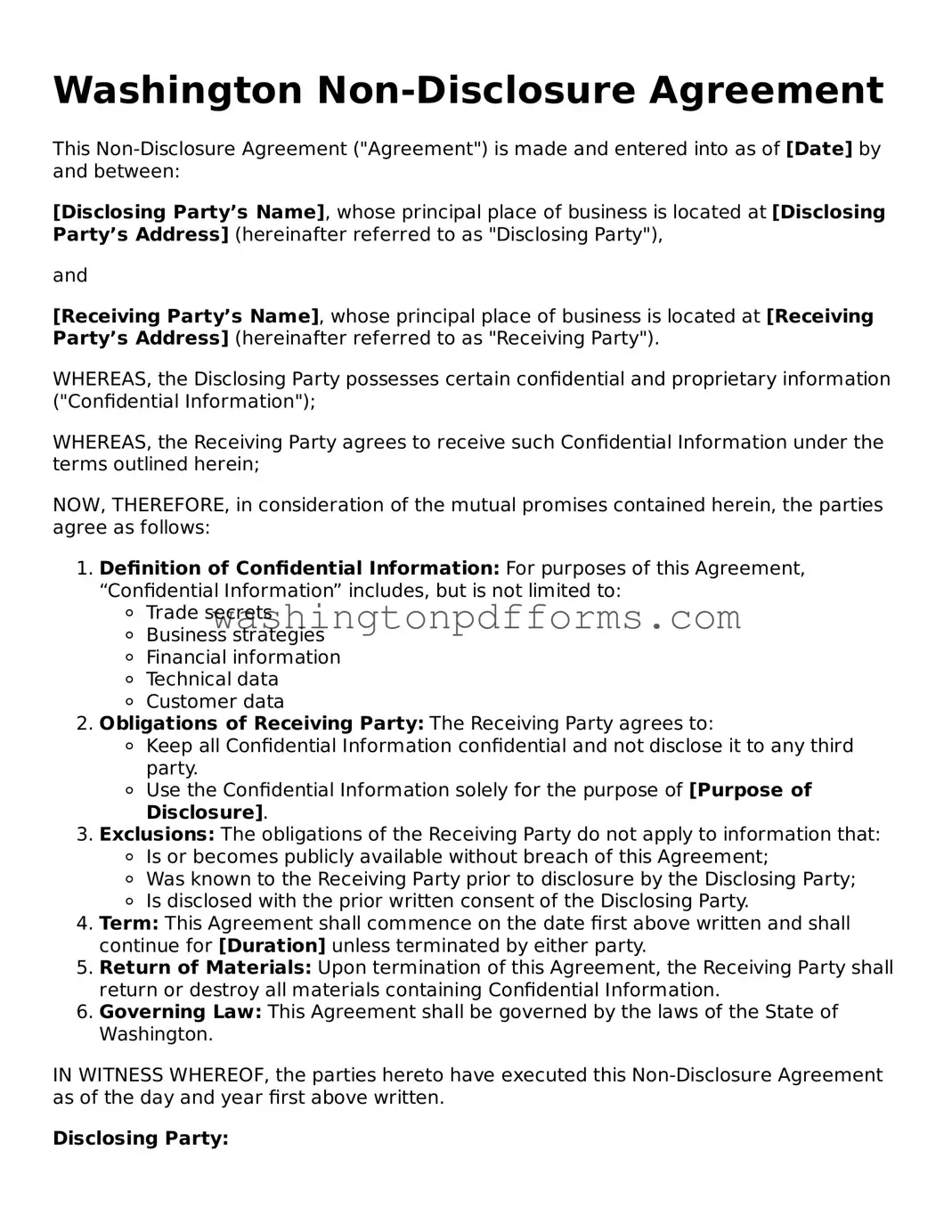Attorney-Approved Washington Non-disclosure Agreement Template
A Washington Non-disclosure Agreement (NDA) is a legal contract that establishes a confidential relationship between parties, ensuring that sensitive information shared during business dealings remains protected. This form is crucial for individuals and organizations looking to safeguard proprietary information, trade secrets, or other confidential data. By signing an NDA, parties commit to not disclosing the specified information to unauthorized third parties.
Make My Non-disclosure Agreement Online
